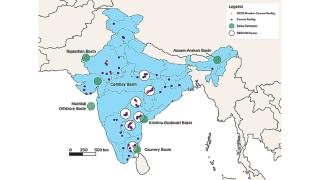New analytical methods to characterise the inner particle size distribution (iPSD) of (multi-)composite cements (MCC) have been developed by the Institute of Nonmetallic Materials in Germany, aimed at producing higher-substituted cements with improved efficiency and performance. By Dr Johannes Unseld and Prof Dr Albrecht Wolter, Institute of Nonmetallic Materials, Clausthal University of Technology, Germany.
Over the last eight years, the clinker factor in cement produced in the EU-28 has not been reduced much further, which is surprising given the benefits in terms of resource efficiency and CO2 savings.1 Among the many reasons for this, one factor could be the lack of suitable analytics of (multi-)composite cements (MCC) that are produced by intergrinding. If the particle size distribution (PSD) of the individual constituents are unknown, the strength development of MCCs is more difficult to optimise.
To better analyse highly-substituted cements, two methods were developed by the Institute of Nonmetallic Materials at the Clausthal University of Technology in Germany. The first method – known as the ‘laboratory method’ – was undertaken to determine the exact inner particle size distribution (iPSD), ie, the PSD of each main constituent. This method should preferably be implemented in research and development laboratories where obtaining precise analytical data is more important than the cost and volume of input work.
